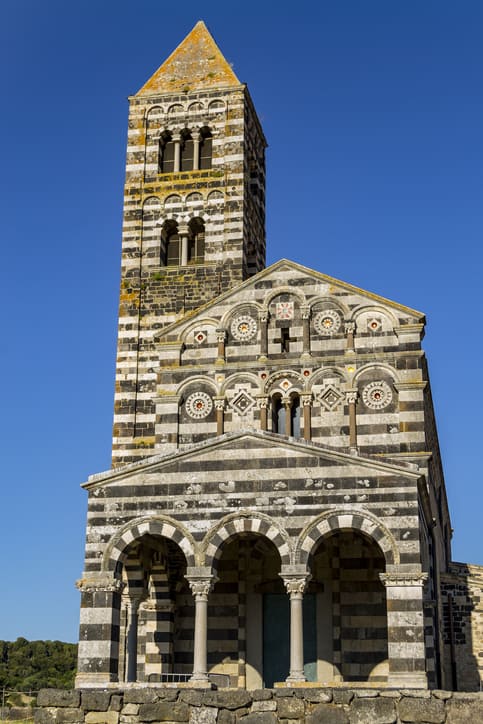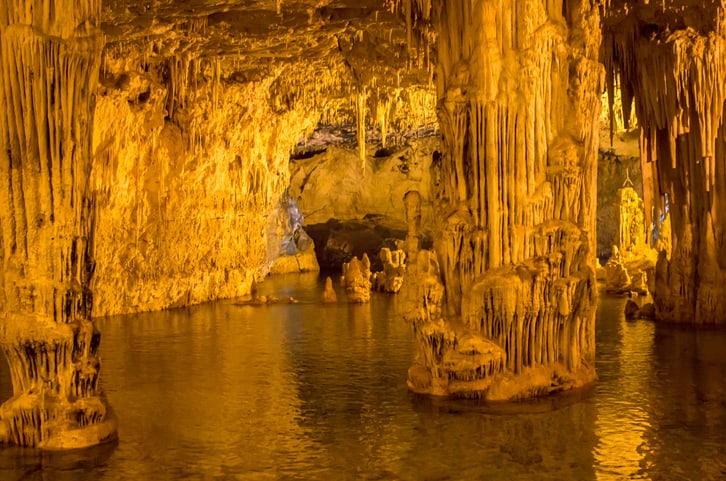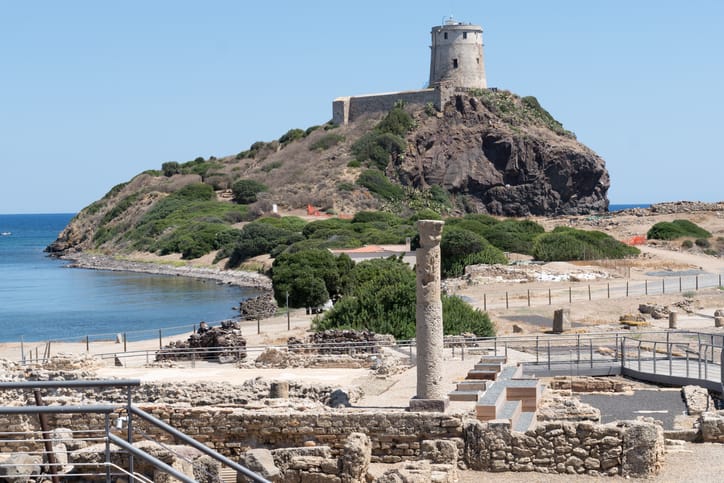Sardinia tours for seniors
Odyssey offers easy, convenient, and relaxed escorted small group tours across the Mediterranean and beyond. We explore Sardinia’s incredible natural beauty, its heritage dating back to Rome and Carthage, its Heritage Sites, and charming seaside towns, all with some truly spectacular scenery along the way. This and more is all waiting to be explored on one of Odyssey’s small group tours of Sardinia, designed for the senior traveller, and led by experienced, and enthusiastic like minded people.
Continues below
Sardinia Tours
Mediterranean Islands Small Group Tour | Malta, Sicily, Sardinia and Corsica
For centuries Malta, Sicily, Sardinia and Corsica held the key to the Mediterranean. Unlike other European tour companies, Odyssey provides a tour leader and local guides to share detailed itineraries about the destinations on these small group journeys. This escorted tour of western Mediterranean explores the geography, history, culture and peoples of these 4 islands. Small group tour for mature couples and solo travellers. A reasonable single supplement is charged.
Located right in the centre of the Mediterranean, the Italian island of Sardinia often feels a world apart. Sardinia was renowned in the ancient world for its obsidian, which was traded throughout the region to make sharp tools and arrowheads. The native Sards were successively overrun by Phoenicians, Carthaginians, Romans, Vandals, Byzantines, Arabs, Spaniards and finally Italians. All these diverse peoples had a hand in the making of today’s Sardinia.
Just like the Italian mainland, there’s plenty to see here. Travellers visit and enjoy a bike tour, walking tour, boat trip, or a drive down the coastal road to enjoy Sardinia’s beautiful sights. On a self-guided tour or on a tour with a small group with Odyssey Traveller, visit the imposing archaeological ruins of the ancient city of Nora, which passed from Carthage to Rome before being abandoned in the 9th century. Nora is Sardinia’s best example of a Roman provincial city, with paved streets over a sewage system, a forum, temples, a theatre, baths, and a medical centre dedicated to the Greek god of healing, Aesclepios.
Explore the historic capital, Cagliari,or the medieval city of Alghero. Cagliari stands on Sardinia’s best harbour. The Stampace quarter in the lower town is picturesque and best known for the church dedicated to Cagliari’s patron, Sant’ Efisio. Alghero, on the west coast, overlooks a great bay with some of Sardinia’s finest beaches, making it a leading tourist centre.
See the distinctive 12th century Romanesque Basilica di Saccargia. Befitting its Mediterranean location, Sardinia also has a beautiful coast. Escape to the granite islands of La Maddalena and the lagoons of the Sinis Peninsula, or go on a leisurely walk on the white sands of stunning Cala Goloritzè.
And make sure to tuck into the local cuisine! Sardinia offers Italian food, but with a regional twist: there is sarda (Sardinian sausage), porcheddu (suckling pig), and fregula, a pasta akin to a large-grained couscous, served with North African-inspired saffron. Visit a seaside local restaurant and enjoy a lively dinner with a view of the coast.
Touring Sardinia
Getting around
Odyssey travels by coach and occasionally uses local transport, including trains and ferries. Specifics are always outlined in your tour itinerary. Bus routes run through the main towns of Sardinia and are reliable and inexpensive. Smaller villages are also accessible by bus, though services are more infrequent. Trains link the major towns of Sardinia, though are a slower option than buses.
Accommodation
In major cities, Odyssey stays in centrally located 3-4 star hotels, with easy access to public transport. In smaller towns or rural areas, we usually stay in family-run hotels or guesthouses. On our longstay tours, during which you spend the length of the tour in a single location, we use serviced apartments.
Tour guides
Odyssey always engages local guides with regional knowledge to ensure an authentic experience during which you can learn as much as possible about the history and culture of places you visit.
Geography, Environment, & Weather
The island of Sardinia lies 200 kilometres west of the mainland of Italy and covers an area of 24,090 square kilometres. Much of the terrain in Sardinia is mountainous, with mountainous of granite and schist dominating the island’s landscape. Sardinia’s mountains are split by valleys and rivers, while scrub and grassland covers much of the countryside’s uncultivated areas.
Sardinia has a Mediterranean climate, with warm summers and cool winters. Depending on when you intend to travel, check the weather reports and dress accordingly.
World heritage sites
There is one heritage site in Sardinia listed on the World Heritage List. You can view the listed properties here: (https://whc.unesco.org/en/statesparties/it). Sardinia’s listed properties include:
Su Nuraxi di Barumini, a archaelogical site featuring a village complex and a network of defensive structures built by the former Nuraghe people.
Festivals & Events
The cultural heritage and traditions of many of Sardinia’s towns are celebrated through festivals and events held throughout the year. The patron saints of Sardinia’s cities are treated with reverence and respect, with many cities holding festivals in their honour – for example, the Festa di San Simplicio is held in honour of the patron saint of Olbia, and features costumed parades, poetry and songs. One of the more eye-catching annual events in Sardinia is La Cavalacata – held in Sardinia’s second city of Sassari, the festival is marked by colourful processions, dancing and thrilling horse races. The agricultural produce of the island is celebrated through numerous regional fairs and events, including the Sara della Castagne Chesnut Fair in Aritzo and and the Artichoke Festival in Uri.
Reading list
Archaeology and History in Sardinia from the Stone Age to the Middle Ages, by Robert J. Rowland and Stephen L. Dyson
Sweet Myrtle & Bitter Honey: The Mediterranean Flavors of Sardinia, by Efisio Farris and Jim Eber
Legacies of Violence: History, Society, and the State in Sardinia, by Antonio Sorge
Sunflower Landscapes of Sardinia, by Andreas Stieglitz.
Eating & Drinking
While Sardinian food has been influenced by cooking techniques from the Italian mainland, the island’s cuisine has retained a distinctive local flavour. Meat, seafood, bread and cheese are all staples of the Sardinian diet, with the island’s food sourced from the fields and waters that surround it. The most popular type of bread is pane carasau, a thin, circular flatbread, and is often served with meat and cheese on an antipasto board. Sardinia has many local pasta recipes and variations, including fregola, semolina pasta balls that resemble couscous, and malloreddus, which is made from semolina flour and has a curved, oblong shape. Meals in Sardinia are often concluded with a chilled serving of limoncello, a lemon-flavoured liqueur.
Health & Safety
Generally speaking, Sardinia is safe to travel in, though always exercise common sense while travelling. Bag snatching and pickpocketing does occur, so keep your valuables close and pay attention to your personal security.
Electrical Supply
Whenever you travel overseas, it’s always wise to take an appropriate travel adaptor. The electricity supply in Sardinia runs at 230V and 50Hz. Sardinia uses Type F and Type L electric plugs, so make sure you have the right travel adaptor with you.

Basilica di Saccargia

Neptune's Grotto

Nora ruins
FAQs
Sardinia has a single time zone, Central European Standard Time (UTC+1). Daylight savings commence on the last Sunday of March, and conclude on the last Sunday of October.
If you’re on an Odyssey tour, we take care of tipping so you don’t need to give it a second thought. However, in your free time, or if travelling independently, it’s essential that you tip an appropriate amount for services. Tipping is not customary in Sardinia, though tips are appreciated, especially if service was to an exceptional standard. A small tip of a few euros to hotel staff for decent service is appropriate, while many will round up the bill for restaurants and taxis.
WiFi should be freely available in most hotels, cafes and restaurants.
Check with your cell phone provider to see whether you’re able to make calls and use data while in Sardinia. Many providers will allow you to pay a daily fee that allows you to make calls and check the internet while only being charged your regular rates. However, be certain to inform your provider that you’re heading overseas, because just like a bank they can turn off your service as a result of unusual activity.
Articles about Sardinia published by Odyssey Traveller.
- About Malta, Sicily, Sardinia and Corsica
- Mediterranean Islands: Malta, Sicily, Sardinia and Corsica
- Southern Italy
For all the articles Odyssey Traveller has published for mature aged and senior travellers, click through on this link.
External articles to assist you on your visit to Sardinia.
- The best restaurants in Sardinia (Telegraph Travel)
- Sardinia Travel Guide (Travel + Leisure)
- Sardinia Travel (Lonely Planet)
- Sardinia (Discover Italy)
Responsible travel tips for Sardinia
- Learn at least the local greetings to break the ice. Although some locals speak English, the more you know of the native language, the greater your experience of the country will be.
- Carry a business card in your wallet or purse from your local hotel, to assist you with the return journey if you do become lost.
- Always ensure that you are covered by travel insurance. If you need advice on this feel free to contact Odyssey and we’ll be able to help.
- Before departing, make sure you have a number of euros in a range of denominations. You don’t want to be carrying around enormous amounts of cash, but take enough to make it easy to pay in locations that might not accept credit card. It will also help you avoid card transaction fees, and it makes tipping a breeze.
- When travelling independently, make sure you check the opening hours of shops and museums so that you don’t miss out! Also be certain to check whether your trip coincides with any public holidays, so you can plan accordingly.
- Before departing on your trip, contact your bank to inform them that you may be making purchases overseas. Otherwise, they may flag any activity on your account as suspicious. Also, check which ATMs and banks are compatible with your cards, to ensure you can withdraw cash with minimal fees.

